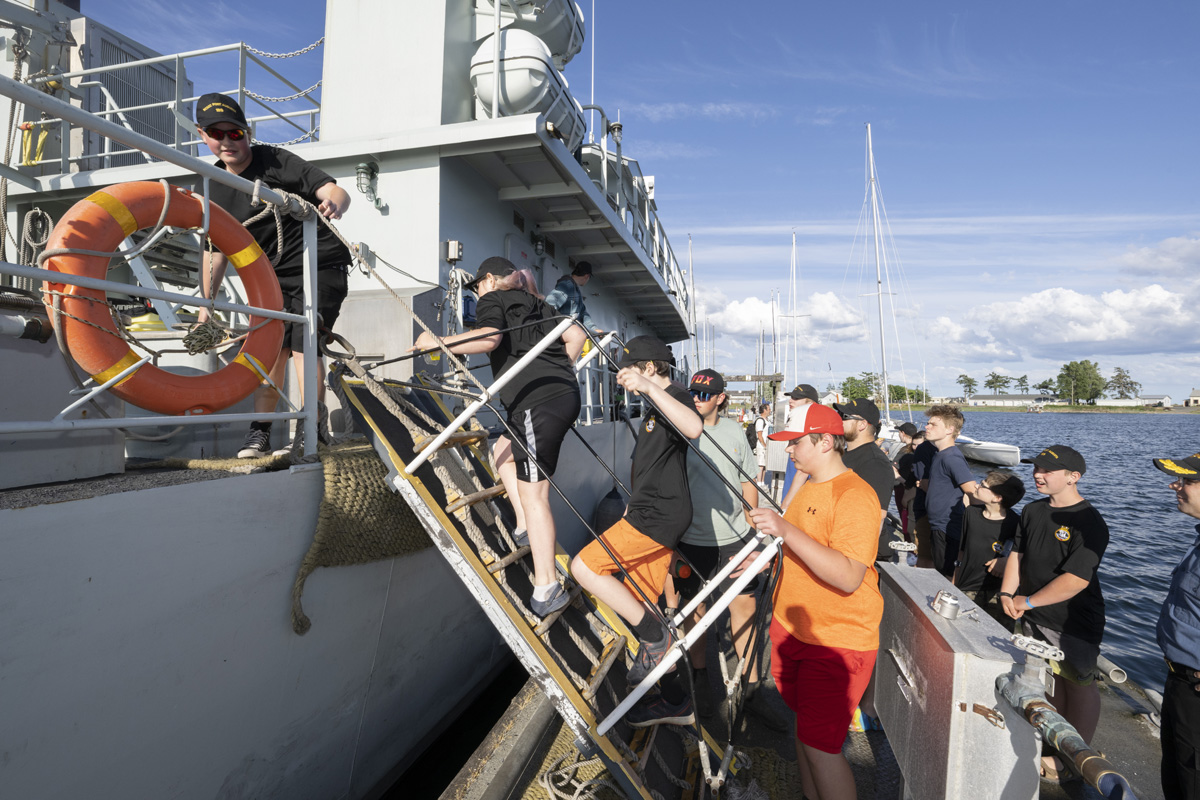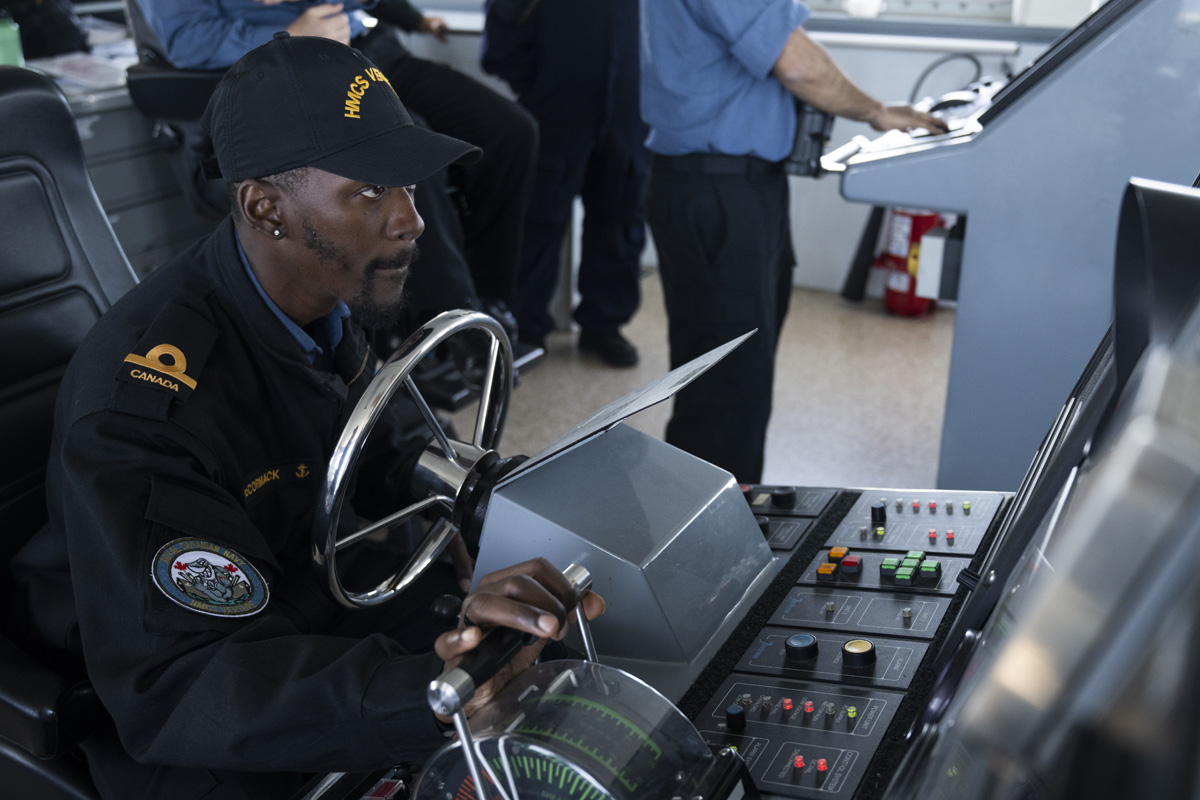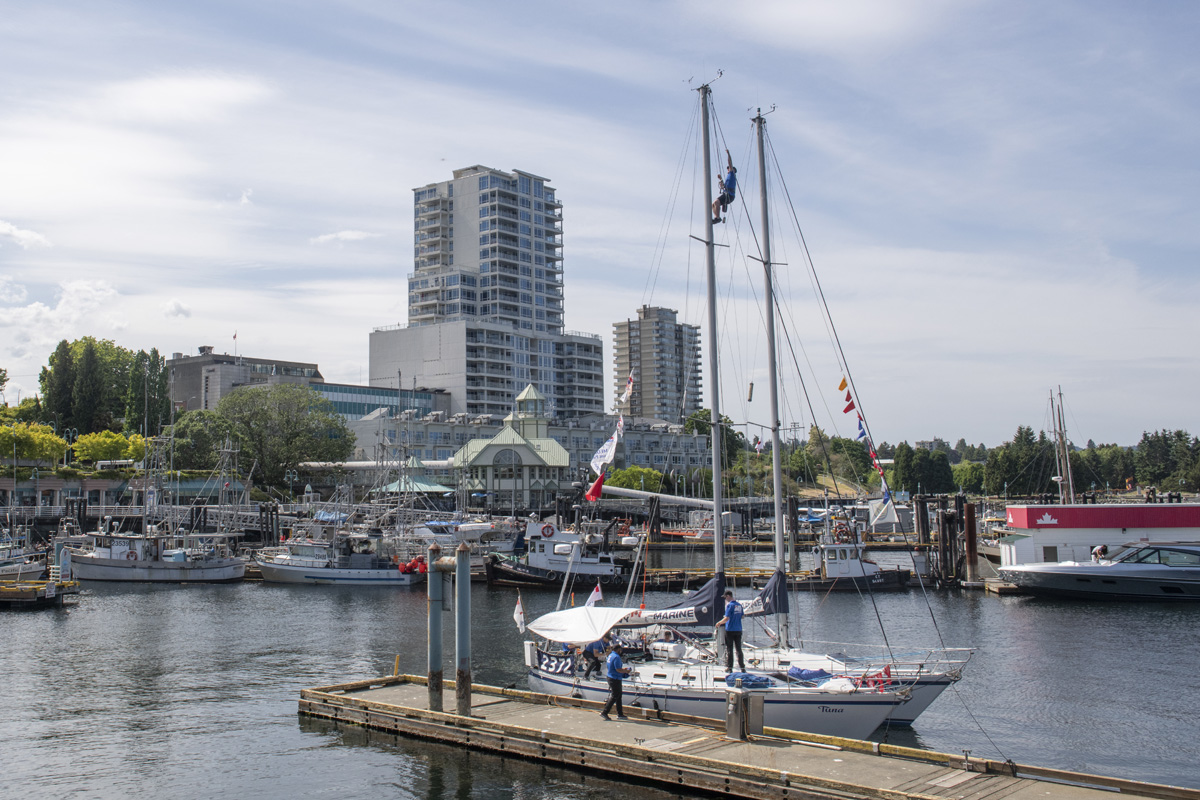New sailors cut their teeth at Van Isle 360
By Lookout Production on Jul 18, 2023 with Comments 0

Various Royal Canadian Cadet groups visit Royal Canadian Navy Patrol Craft Training RAVEN 56 while sailing in support of VanIsle 360, on 03 June 2023 in Comox, British Columba.
Photo by: Master Corporal Andre Maillet, Maritime Forces Pacific Imaging Services
Peter Mallett
Staff Writer
Training and military discipline can turn non-sailors into proficient racing team members.
This has been the case with two sailing teams representing the Royal Canadian Navy (RCN) in the 2023 Van Isle 360 Yacht Race.
Sailing Training Vessel (STV) Tuna, skippered by Master Sailor (MS) Ben Sproule of HMCS Calgary, finished fifth out of nine teams in the race’s Division 3 Class standing.
STV Goldcrest, skippered by Lieutenant (Navy) (Lt(N)) Ellery Down of Naval Fleet School (Pacific), finished eighth.

Crew of Royal Canadian Navy Patrol Craft Training RAVEN 56 conduct emergency steering drills while sailing in support VanIsle 360, on 04 June 2023 in Comox, British Columba.
Photo by: Master Corporal Andre Maillet, Maritime Forces Pacific Imaging Services
To the casual observer, their placings in the standing do not seem like much to crow about. But the results need to be viewed with an understanding that the crews sailing under each skipper had little or no sailing experience and were recruited just five weeks before the race began, explains Lt(N) Down, Officer in Command of the event.
“I was extremely impressed with both crews,” Lt(N) Down said. “This race provided an exciting opportunity for the junior sailors who are early in their careers.”
Lt(N) Down added the odds of winning were also stacked against RCN teams because of the boats they crewed; Tuna and Goldcrest were the slowest-rated vessels in the race fleet, making it more difficult to navigate areas with stronger currents.

Royal Canadian Navy crews of Sailing Vessel TUNA and GOLDCREST conduct pre-race maintenance and readiness procedures prior to the start of VanIsle 360, on 02 June 2023 in Nanaimo, British Columba.
Photo by: Master Corporal Andre Maillet, Maritime Forces Pacific Imaging Services
The 15-day race began June 3 and involved 40 teams and approximately 400 sailors competing in a challenging 580-nautical-mile course around Vancouver Island.
Before the race, both Lt(N) Down and MS Sproule said seeing the two teams complete the gruelling course would be a victory. When the two sailboats and their crews returned to the finish line in Nanaimo, both seemed fully satisfied with how things played out on the water.
Lt(N) Down and MS Sproule drew their teams exclusively from HMCS Venture, Naval Fleet School Pacific (NFS(P)) Officer Training Division.
Their pre-race training included in-class instruction, daily sail training around southern Vancouver Island, races against boats of the Canadian Forces Sailing Association, overnight sail training in more challenging seas at the western edge of the Strait of Juan de Fuca, and Sea Survival and Crew Overboard training courses.
Obstacles in their way
They faced wind speeds of over 35 knots (64 km/h) more than once, while wind gusts topped out at 50 knots (92 km/h) during one leg of the race. MS Sproule says the strong gusts resulted in large sea swells and waves of three to six meters, posing a huge challenge for Tuna.
At one point, the waves were coming at the boat from astern, picking the vessel up and turning it, forcing the sailor at the helm to keep up with them.
“The crews were exhausted, and some became sick, so both Tuna and Goldcrest anchored for the night,” MS Sproule said. “This added some distance to our leg, but we would not be at sea in the pitch black, unable to see the waves.”
The Tuna made up for lost time the next day.
One of the big setbacks for Goldcrest was the loss of its port jib sheet block, critical for trimming head sails in heavy wind. The crew improvised with an alternative block onboard to take the heavy loads from the sails, said Lt(N) Down.
Then, on the last leg of the race, Goldcrest lost the functioning of its instruments for wind, water depth and Automatic Identification Systems (AIS) for vessel tracking.
“This really took away our competitive edge when we needed it most on the final leg and meant we had to make more conservative navigational decisions to keep the vessel safe,” he said.
Both vessels relied on RCN Patrol Class Training Vessel Raven as their supply vessel; all boats competing in the race could also depend on the Raven as their Support Vessel for emergencies on the water. Raven also provided public outreach through guided tours of the ship in port towns along the race course.
Bravo Zulu to the participants!
Filed Under: Featured
About the Author:





